Tag: Dave Argento ’21
House of the Dragon Seeks GoT Redemption
by Sara Conway on May 6, 2021
Film and Television
George R.R. Martin Returns to Advise the Prequel
by Dave Argento ’21 A&E Staff
Just three days before the 10-year anniversary of the premiere of the record-breaking series Game of Thrones, HBO officially announced production of the highly anticipated prequel series House of the Dragon. Fans of George R.R. Martin’s high fantasy universe have been anticipating House of the Dragon since the show was unveiled by WarnerMedia in October 2019. Co-creators Martin and Ryan Condal will have an upward battle in producing the first official project from the Song of Fire and Ice world since what many consider to be one of the most disappointing final seasons and finales in television history.
House of the Dragon will take place 300 years before the events of Game of Thrones and will follow the story of House Targaryen using material from Martin’s 2018 book Fire & Blood. The ancestors of Daenerys Targaryen (a.k.a. the Mother of Dragons) ruled the lands of Westeros prior to Robert’s Rebellion which had preceded the Game of Thrones story arc. Considering the series will take place during the peak of Targaryen military power, the massive budget of $15 million per episode as the most expensive show to date should suffice to provide fans with all of the CGI dragon action one’s heart could desire.

The massive project will surely have the production value and media buzz to succeed, but the quality of the writing will be observed incredibly closely considering the bad taste left in fans’ mouths as a consequence of House of the Dragon’s predecessor. Some good indications have come from the staff announced to create the show as the likes of Miguel Sapochnik who has directing credits for six Game of Thrones episodes for which he won an Emmy and DGA honors for “Battle of the Bastards” will be involved.
Contrary to the last seasons of Game of Thrones, where it was rumored George R.R. Martin and co-creators David Benioff and D.B. Weiss had severed ties over creative differences, Martin is back to being a more active contributor to the new project. Many attribute Martin’s absence and lack of source material to why the ending to Game of Thrones was what most consider a tremendous failure in story writing, so at least these two corrections seem to have been made. There will likely be a mix of hope and skepticism as diehard fans would love to see more of Martin’s highly regarded writing come to life on screen without the disappointment that was felt throughout the fandom following the finale approximately two years ago.
House of the Dragon lacks an official release date, but HBO programming chief Casey Bloys suggested in a January interview that it might premiere sometime in 2022. Other Game of Thrones spinoff series are likely to come in the coming years, but production delays and budget cuts during the COVID pandemic have led to even more questions surrounding if and when such projects might come to life. House of the Dragon serves as a new opportunity to dive into George R.R. Martin’s genius and incredibly detailed fantasy universe, causing fans to eagerly await any content to come in the coming months of production.
Paul vs. Askren: Boxing Match or Money Grab?
by Patrick T Fuller on April 22, 2021
Arts & Entertainment
Triller Fight Club Puts on Entertainment Circus
by Dave Argento ’21 A&E Staff
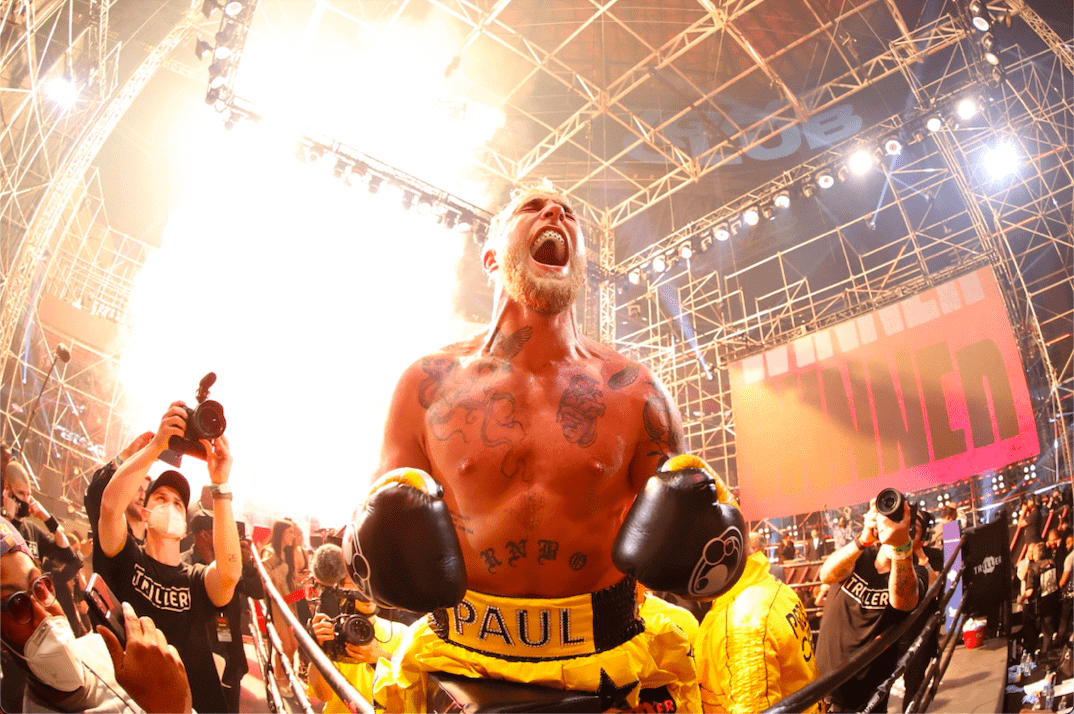
If you blinked, you probably missed it. The highly anticipated boxing match between YouTuber Jake Paul and retired mixed martial artist Ben Askren was quite the spectacle to behold, but not because of the fighting. With over three and a half hours of buildup consisting of live music, undercard boxing, and even slap fighting hosted by Ric Flair, many who dished out their money for the pay-per-view event were questioning what circus act they were really paying for. To top off a night of sub-par production value and a bewildering array of celebrity appearances, the main card match lasted a disappointing 1:59 with Paul winning in the first round via technical knockout.
If someone says the names Justin Bieber, the D’Amelio sisters, Snoop Dogg, and Pete Davidson, surely boxing is not the first cultural event that comes to mind. Although YouTube boxing has come a long way since the KSI vs. Joe Weller fight back in February 2018, the display this Saturday left more people scratching their heads than being satisfied with how they spent their weekend night. Andrew Richardson of MMAMania writes, “Nothing made any sense. There was no string that tied it all together. Someone at Triller [a TikTok rival social media app] has a great deal of connections to a ton of stars, but they have no idea what to do with all these names and talents.”
It seemed that event host comedian Pete Davidson had some fun at least, earning his paycheck while ridiculing the production with comments such as, “You can tell how professional this event is by them having me here,” and, “Today is a really wild day for boxing because it just shows how low it has truly sunk.” The first two hours of the event had six minutes of boxing filled in with incredibly raunchy hip hop performances that would make most parents change the channel before some difficult conversations with their children arose. The lack of audience members present while the likes of Ice Cube, Doja Cat, and Justin Bieber performed made the mini concerts awkward to watch, especially because most viewers only tuned in to see Jake Paul and Ben Askren punch each other.
As all of the hype surrounding the knockout clears, what is next for Paul’s boxing career and celebrity boxing as a whole? Paul’s original desired opponent was mixed martial artist Dillon Danis, who declined the challenge; however, following Saturday’s result, Danis posted a picture to Instagram with the caption, “It’s on 100% send At the 1:59 mark in Round 1, the referee deemed Askren unable to continue, awarding Paul a victory via first-round TKO. me the contract let’s do this…” Only time will tell whether the two will face off, but Jake Paul’s win has clearly sent waves through the MMA and boxing communities as many will likely be eager to take the opportunity to hand him his first loss in the ring.
It has become apparent that the media buzz and money surrounding YouTube boxing has caught the attention of the mainstream considering the number of high profile names jumping at the bit to grab their piece of the pie from Triller Fight Club. Although Askren lost the fight, the likely millions of dollars he earned in his two minutes in the ring left viewers asking themselves if they were the only ones that truly lost on Saturday night.
Netflix’s New Documentary, Operation Varsity Blues
by Sara Conway on April 15, 2021
Film and Television
Exposing the Perverted College Admissions Scandal
by Dave Argento ’21 A&E Staff
Providence students are not likely to hold fond memories surrounding the standardized testing and application process that haunts most high school juniors in the United States. Beyond the pressures of future career prospects and connections being influenced by colleges attended, parental expectations have managed to warp the priorities of a young adult’s educational flourishing into a toxic rat race for bragging rights. Netflix’s new documentary, Operation Varsity Blues: The College Admissions Scandal, dives into how independent college counselor Rick Singer capitalized on the college admissions industry through his illegal scheme exposed in 2019.
Singer’s system brought in approximately $25 million from wealthy parents; he would bribe coaches and administrators so that their children would have surefire ways of being admitted into the most prestigious colleges in the country. Singer often used the phrase “side door” when selling the metaphor for his services to celebrities like Lori Loughlin and Felicity Huffman to show how he would subvert the known, legal paths to student acceptance. With top ranked colleges becoming increasingly difficult to get into through the “front door” of the standard application process and the exorbitant price tag on the “backdoor” of donating tens of millions of dollars to schools to buy acceptance, wealthy parents disregarded moral judgements to use Singer’s side door option.
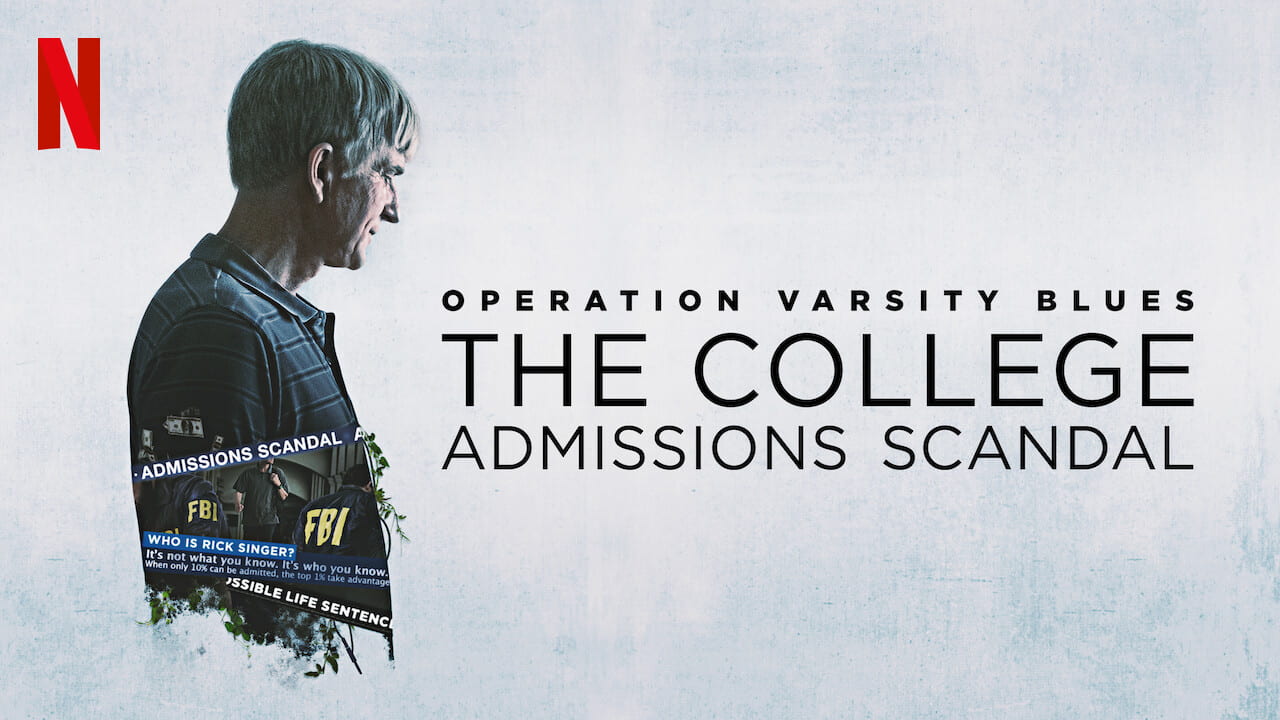
Singer used many techniques to pull off his heinous operation. His primary method involved bribing notable members of coaching staffs and athletic departments at top schools to commit players to their teams that often had never even played the sport. Admission via sports teams of lesser notoriety subverted the usual criteria for acceptance if coaches gave approval, allowing Singer to get students through this channel for years. His other method of having students fake learning disabilities so that their private proctor could take their standardized tests to near perfection made genius applicants out of ordinary students in the eyes of those judging applications. Following the scandal, there have been investigations and crack downs on both the student athlete recruiting processes and the standardized testing protocols.
Lauren Kranc of Esquire writes, “In total, 50 people—33 wealthy and influential parents, two SAT and ACT administrators, one exam proctor, nine college athletics coaches, and one college administrator—were charged in Operation Varsity Blues.” The documentary combines acted -out portrayals of the major players within the scandal with real life interviews from some of those who worked to bring Singer and his clients down in the FBI’s operation. To this day, Singer has yet to be sentenced or to spend any time in prison, as his assistance with exposing many of his clients to authorities earned him some leniency with the law.
The college search and acceptance process has always had inequality based on income, but Operation Varsity Blues shows how many of the nation’s wealthiest went beyond the law in disregarding morality to favor what could be debated as either parental egotism or doing the best for their children. Netflix’s documentaries have continued to bring greater transparency to specific topics that might have the mainstream reach to force greater reform within the U.S college admissions process. Operation Varsity Blues may just be the tip of the iceberg
Nickelodeon Announces Creation of Avatar Studios,
by Patrick T Fuller on March 18, 2021
Arts & Entertainment
Production of New Avatar Content by Original Creators
by Dave Argento ’21 A&E Staff

After 16 years since the premiere of Avatar: The Last Airbender, and six years since the finale of The Legend of Korra, Nickelodeon’s February 2021 announcement of Avatar Studios has reinvigorated excitement surrounding what content the highly popular animated world will yield. Although The Last Airbender was tremendously popular and The Legend of Korra saw rather strong ratings as well when these series were originally released, fans of the fantasy franchises had lost hope in ever seeing more of the magic that original creators Micheal DiMartino and Bryan Konietzko produced. With Nickelodeon’s support for Avatar Studios, the two will now have the greatest financial backing and creative freedom that they have had yet to dive deeper into the lore-rich world of Avatar.
Many Netflix subscribers are likely to remember the booming Avatar fandom that formed in the spring of 2020 when Avatar: The Last Airbender became the most watched title on the platform as of May 22, 2020. Between the original fans that grew up with protagonists Aang and Korra and the new binge-watchers engaging across social media, the hype surrounding the two shows set the stage for this announcement.
DiMartino and Konietzko have had a long and rather difficult history with licensing agreements and creative restrictions failing to do the franchise justice. Henry St Leger of TechRadar writes, “There was an ill-fated, whitewashed and universally-panned live-action movie of The Last Airbender, directed by M. Night Shyamalan—originally intended to be a trilogy of films, but scrapped due to the poor reviews and low profits of the first film.” This comically bad film left a sour taste in the mouths of dedicated fans, casting doubt on whether or not a quality remake would ever come. Lacking the original Avatar creators, the film was almost doomed from the beginning.
In 2018, Netflix announced its own plans to make a live-action TV series based on The Last Airbender, but internal difficulties regarding creative differences caused DiMartino and Konietzko to depart from the project. The status of the Netflix series remains unclear following the implied conflict behind the scenes, as there has yet to be an official release date two years after the initial announcement of the project. The two original animated series are still on Netflix, but the longevity of the ties between Nickelodeon’s licensing of the titles and the Netflix platform is not likely to persist in the long-term.

Nickelodeon’s announcement of Avatar Studios coming shortly after DiMartino and Konietzko’s departure from Netflix may imply that any new Avatar content would be released on Paramount Plus, the new streaming platform of Nickelodeon’s parent company, Paramount. Julia Alexander of The Verge writes, “The new streaming service will have more than 30,000 TV episodes and films from across its various brands, including BET, CBS, Comedy Central, MTV, Nickelodeon, and Paramount Pictures, alongside some aspect of live sports and news.”
This new support and new platform provide DiMartino and Konietzko with the best tools for success they have seen since The Legend of Korra years ago. Although the specifics surrounding the future of the Avatar world still remain rather unclear, fans that have patiently waited for new content from the original creators will have releases to look forward to in the relatively near future.
A Look Into Zach Synder’s Justice League
by Sara Conway on March 4, 2021
Film and Television
The Tumultuous History Leading Up to the New Release
by Dave Argento ’21 A&E Staff
Fans of the DC Comics cinematic universe were likely thrilled to see the official trailer for Zack Snyder’s Justice League posted on Feb. 14. The storied title is set to be made available to HBO Max subscribers on March 18 in a four-hour-long cut from the original director. After the disappointing cinematic release in 2017, which was marred by tumultuous production behind the scenes, Snyder returns to show loyal fans of the comic book franchise what could have been.
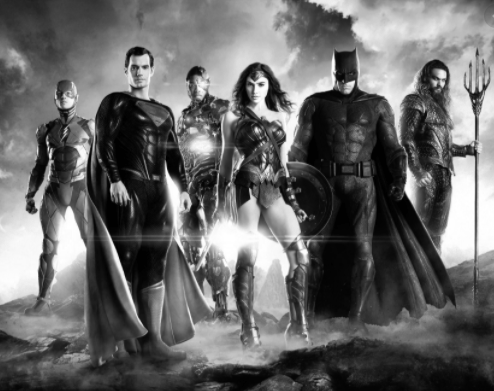
In what many deem a failure in Joss Whedon’s theatrical cut of Justice League, DC enthusiasts have sought answers for what Snyder’s project would have been without the behind-the-scenes drama that surrounded the original release. Following Snyder’s decision to step down from his role in late May 2017, following the unfortunate death of his daughter, many believed the newly promoted Whedon would make only tweaks considering producer Charles Roven’s comment, “It was fortunate that Zack convinced him, and he agreed to step in and finish the movie, help Zack finish his vision, and we’re excited about that.” The following months showed the public, though, that this was not the case.
With various details leaked hinting at difficulties behind the scenes including the film’s composer being dropped, Snyder removing Justice League imagery from his social media, and evidence of extensive reshoots being done, increasing apprehension about the quality of the project became palpable. David Craig of RadioTimes writes, “In late August, it was officially confirmed that Whedon would be credited as a writer on Justice League, which is significant as it indicates he had penned more than 33 percent of the film (according to Writers Guild of America guidelines).” This news implied an overhaul of Snyder’s work and likely conflicts between the contrasting visions for the project.
Despite Justice League managing to meet its originally scheduled release date of Nov. 17, 2017, the poor critic and viewer response to the film left box office earnings at $657 million worldwide, just covering the film’s enormous budget. Two years after the original release, many of the disappointed cast members such as Ben Affleck, Gal Gadot, and Ray Fisher united behind Snyder to ride the momentum of the rather aggressive online fan campaigns to have Snyder’s original vision be released to the world. Finally, on May 20, 2020, Zack Snyder’s Justice League was announced for HBO Max with a budget of $20-$30 million to remake the theatrical cut that haunted Warner Brothers.
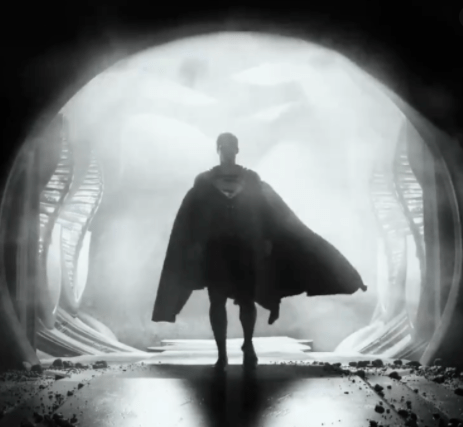
Although the new Justice League cut would never have made it to the big screen with such a lengthy runtime, the rather new practice of releasing feature films to subscription services, prompted by COVID-19 forcing most theaters into closure, has liberated directors in some sense to defy the conventional format. Snyder’s work on Batman v Superman: Dawn of Justice leads fans to believe he may have created a more faithful follow-up than Whedon in respect to the DC universe lore and quality of production. DC fans now eagerly await the release of Snyder’s much lengthier cut to see if he can now fulfill what so many had originally hoped for.
Bath Food Co: Innovating Food Delivery Service
by Patrick T Fuller on February 25, 2021
Arts & Entertainment
Kitchen Rentals Expand Restaurant Opportunities
by Dave Argento ’21 A&E Staff
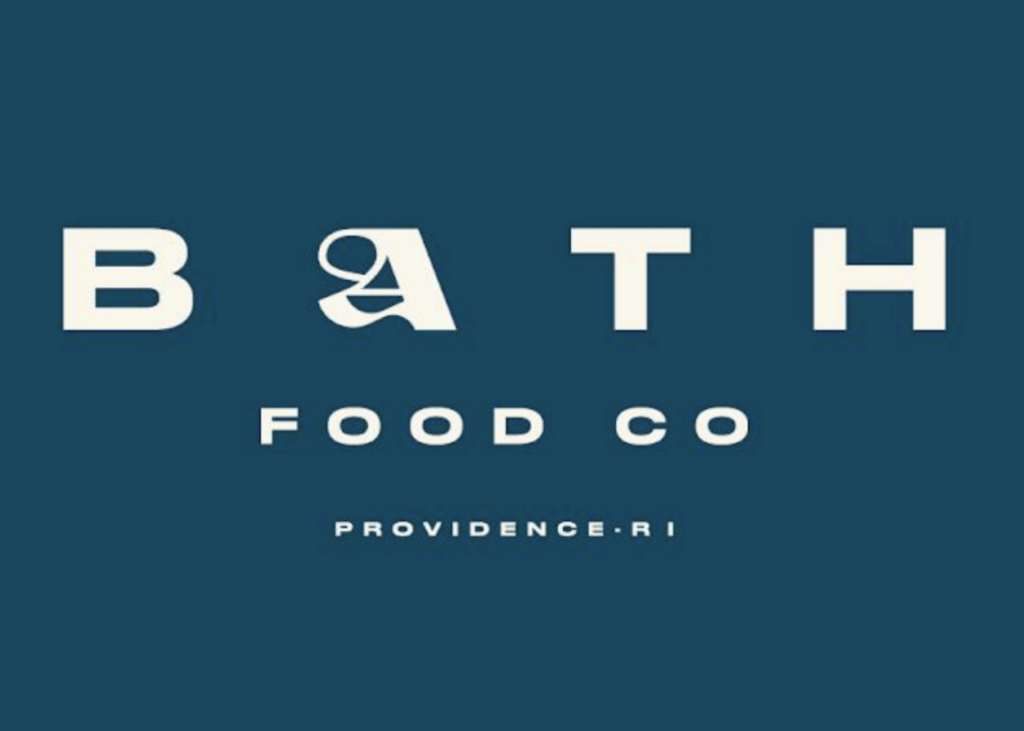
As we approach almost a full year of COVID-19 quarantines and reinvented ways of life, the shifts in consumer trends and business models will likely leave a lasting impact on the new normal of industries, such as the restaurant industry. Given that the usage of food delivery apps has grown exponentially since the start of the pandemic, Uber Eats, DoorDash, and Grubhub will remain household names for the foreseeable future. Restaurants have been forced to adapt to this trend as the proportion of sales coming from mobile orders has surpassed 50 percent for many.
Although food delivery has seen such a significant boom, many challenges threaten the long-term feasibility of the business model. Levi Sumagaysay of MarketWatch writes, “While the companies are seeing a surge in business, their costs remain too high to post any sustained profit.” These costs often lead to noticeable fees that each transaction collects, which deter both restaurants and consumers from using the services. This bottleneck of process inefficiencies coming from charging high fees and swallowing the costs of labor is a major issue for the industry as businesses search for adequate solutions.
An effort to find such a solution can be found local to Providence College at Bath Food Co., which is a new response to the COVID-19 dining landscape. They bring a new efficiency for restaurants and mobile food ordering services by simplifying the process. Their creative response to reduced indoor dining is to act as the bridge between the kitchen and the customer. Essentially, with Bath Food Co,, restaurants are able to rent out one of their kitchens to be part of the hub of dining options, serving as another potential location for chain or local restaurants.
Approximately a mile from the College’s campus, at 65 Bath Street, many students are likely to notice the new dining options available. Chick-fil-A, Pokemoto, and Tilly’s PVD are only a few of the choices for Providence students to enjoy as the close proximity to campus makes pickup and delivery as quick and inexpensive as possible.
When a food delivery person or mobile order enters the minimalist warehouse-like building, they are greeted with a check-in point of five iPads and a pick-up window for their food. The process is as simple as possible so that little to no wait is required to obtain the order. The lack of a need for waiting staff and restaurant upkeep keeps margins high for the producers while providing the same level of quality one could expect from the original locations of the restaurants. The advantageous location allows more deliveries to occur at an expedited rate.
As the vaccines and decreasing rates of positive testing provide a light at the end of the tunnel, it will be fascinating to see how a return to a new sense of normal will impact those that have flourished in the COVID-19 environment. Delivery apps had already been on the rise before the pandemic, so if the trend continues, innovative business models like Bath Food Co. may be here to stay for the dining industry at large.
EA Sports Announces the Return of NCAA Football
by Sara Conway on February 11, 2021
Gaming
How the Revival Will Impact Athlete Compensation
by Dave Argento ’21 A&E Staff
Debates over financial compensation for student-athletes have been part of an ongoing battle for years, driven by the fact that Division I sports pull in massive revenues for television networks and schools alike. With the announcement of Electronic Arts’ new college football video game in development, a new chapter of this debate is now underway. Considering the NCAA Football series’ abrupt finish due to legal battles regarding student-athlete compensation, the new college football game—title to be announced—will reignite these conversations and may greatly impact the lives of college football players and the futures of Division I athletes.
The NCAA Football series is likely to hold a special place of nostalgia in the hearts of many Providence College students, as the highly popular gaming titles were household names. By the time the franchise ended in 2014 after the release of its final installment, NCAA Football 2014, the series had sold more than 10 million copies. Despite the financial success the yearly releases produced for EA, Kevin Webb of Business Insider writes, “College sports games saw a swift decline in 2009 after former UCLA basketball player Ed O’Bannon filed a lawsuit against EA, the NCAA, and the Collegiate Licensing Company demanding royalties for college athletes who appeared in video games.” The $60 million settlement in 2014 likely left a sour taste in the mouths of EA executives as the lawsuit inevitably led to the end of the legendary series.
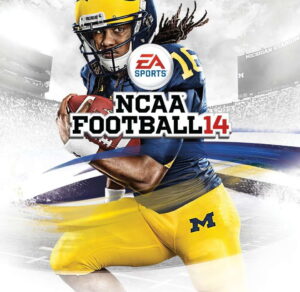
The key difference gamers will find between the NCAA Football series and the new release will be directly related to these legal troubles, as the new release will lack both the names and likenesses of the players. Changing player names and likenesses, as well as team names, is no new struggle for EA as the massively successful FIFA series has found more professional soccer clubs and individual players signing their rights away to direct competitor series, Pro Evolution Soccer. Teams and players have recognized the value in their brands, with teams such as Juventus F.C. taking the endeavor into opening negotiations and going with EA’s rival in the soccer gaming space.
With the NCAA still holding firm control over the rights to player names and likenesses, EA has decided to bypass the organization in what is a rather controversial move. Zack Millsap of Comic Book Resources writes, “Electronic Arts decided to work with the Collegiate Licensing Company instead of the NCAA to avoid potential future legal problems. The CLC will provide EA with all the school trademarks it will need to recreate the NCAA football experience. All the school logos, stadiums, and uniforms will remain fully intact, but without NCAA players’ names or likeness.” Some see this as an injustice to the players as it deprives them of the brand recognition and royalties that are bypassed by the move.
While the NCAA appears to be holding firm in its efforts to maintain rules preventing Division I athletes from being paid, video game royalties and licensing could have the potential to lead to student-athlete compensation. EA’s new release currently has no official title or release date, but fans of the NCAA Football franchise can still look forward to what is likely to be a major release sometime in the relatively near future.
Checkmate: Queen’s Gambit Makes Chess Mainstream
by Patrick T Fuller on February 4, 2021
Arts & Entertainment
The Harrowing Story of Beth Harmon Inspires a Resurgence
by Dave Argento ’21 A&E Staff
Since the onset of the pandemic, people stuck at home have sought new outlets for entertainment to replace some of the many activities rendered obsolete by COVID-19. As a result, the 1,500-year-old game of chess has seen increased consumer interest as an engaging and safe source of fun. Although the steady increase in playerbase and viewership that the board game saw during the pandemic helped the chess world, it more importantly provided the perfect foundation for the unprecedented boom that would follow the release of one of Netflix’s top shows: The Queen’s Gambit.
The Queen’s Gambit, starring Anya Taylor-Joy, tells the story of a young, orphaned girl named Beth Harmon who takes her acute interest in chess to eventual mastery of the game and chess stardom. The compelling narrative comes as an inspiration to many with its powerful message of an underprivileged girl battling addiction and defying the odds to reach the top of the male-dominated arena as a young woman. Contrary to many of the depictions of competitive chess in prior films and series, director Scott Frank put forth additional effort and attention to detail in order to integrate into the show a more accurate depiction of the competitive chess world than mainstream media had ever seen before.
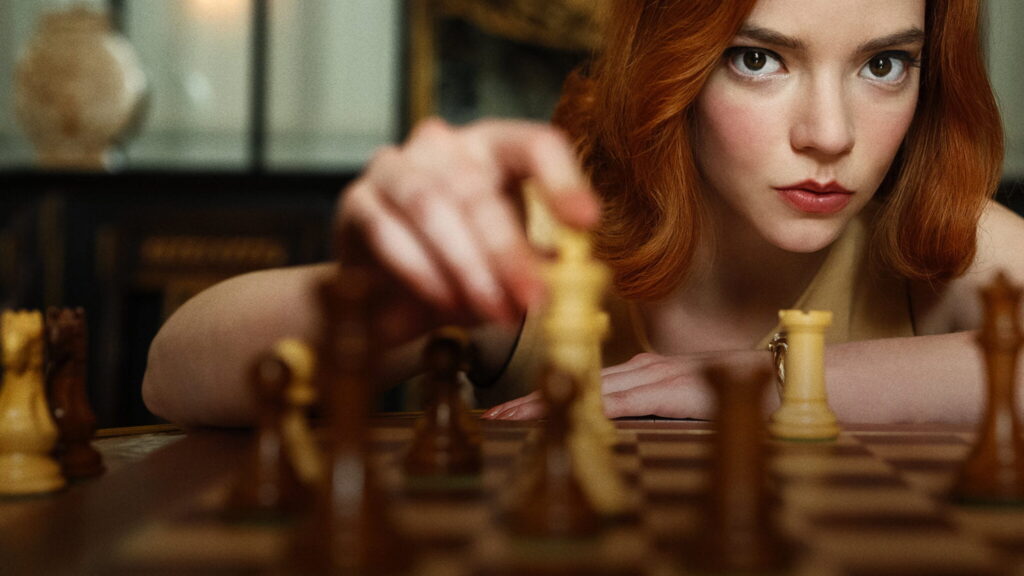
Harmon’s success in beating the world champion Vasily Borgov parallels the massive success of the series. Viewership data shows 62 million households watched The Queen’s Gambit in the first 28 days after its release, more than any previous Netflix scripted limited series.
With this record performance, the entire world of chess has enjoyed skyrocketing intrigue into the classic board game. The clearest evidence of this rise in interest is the booming sales figures of chess sets. Marie Fazio of The New York Times writes, “At Goliath Games, a toy company that sells several varieties of chess sets, set sales are up more than 1,000% compared with this time last year.” The chess set market grew over 125% in just the first weeks after the series premiered.
Although chess has shown tremendous growth in physical board sales, the skyrocketing success of its online platforms also proves how the age-old game has adapted to the contemporary world. Chess.com, one of the top chess websites, reports it has seen millions of new fans flock to the site for games, lessons, and puzzles, giving the site its biggest annual growth since it launched in 2007. Since March, it has added 12.2 million new members, including 3.2 million who joined after The Queen’s Gambit debuted in late October. Popular chess streaming channels, such as Grand Master Hikaru Nakamura and the Botez sisters, have enjoyed massive increases in viewership on platforms like Twitch.tv and Youtube.com.
As with any major trend, there are questions regarding the extent of the staying power of this explosive growth following the current boom. Two-time U.S. women’s champion Jennifer Shahade says, “Growth like that isn’t expected to keep pace as interest in the Netflix show dies down.” She says she believes the interest may translate into a “generational effect.” The most comparable period of mainstream media attention in chess history is likely to be the historic 1972 World Chess Championship won by American Bobby Fisher over Soviet Boris Spassky. Although we are not seeing chess tournaments on cable news channels, the future of chess is likely to be brighter thanks to the inspiration ignited by Beth Harmon.
Gaming Livestreams in Mainstream Popular Culture
by The Cowl Editor on November 13, 2020
Arts & Entertainment
Celebrities Turn to Streaming in the Wake of COVID-19
by Dave Argento ’21 A&E Staff

With sports seasons disrupted, music tours canceled, and the average person having much more free time at home, the gaming industry, specifically live streaming, has boomed during the COVID-19 pandemic. Games such as Call of Duty: Warzone, Fall Guys, and Among Us have gone from fun new games to cultural phenomena. Combining a fast-growing gaming industry and celebrities on hiatuses has led to a new wave of celebrity streamers that may reinvent gaming content entirely.
The first wave of celebrity gamers live streaming on platforms like Twitch.tv and YouTube came in 2018 with the rise of Fortnite. On March 14, 2018, Twitch broke its record for the most-viewed stream by a single player with 628,000 concurrent viewers. James Vincent of The Verge wrote, “Fortnite pro Tyler “Ninja” Blevins assembled an unlikely supergroup to play the wildly-popular sandbox shooter Fortnite. Ninja was joined by NFL rookie-turned-gamer JuJu Smith-Schuster, rapper Travis Scott, and—drum roll please—pop superstar Drake.” This night of streaming seemed to have broken the internet and blown the doors wide open for celebrities crossing over.
This trend has continued to grow exponentially during quarantine as millennial and Generation Z athletes, musicians, and politicians have become streaming icons. The gaming culture in which many of these mainstream celebrities have grown up has ascended in popularity with them. NFL wide receiver Odell Beckham, Jr. has been particularly active as his debut Warzone stream on YouTube had 88,000 viewers tuning in to see him play with gaming giant Dr. Disrespect. Beckham plans to stream consistently during the NFL season on Monday and Tuesday nights.

The most recent major night of gaming that trended across the internet came Tuesday, Oct. 20, with United States congresswomen Alexandria Ocasio-Cortez and Ilhan Omar streaming Among Us to over 400,000 viewers on Twitch.tv. This unusual voter outreach event brought the congresswomen significant praise for engaging with a youth-oriented industry such as gaming. The crossover of the two legislators with popular streamers such as Pokimane, Dr. Lupo, and Jacksepticeye proved the potential of humanizing politicians with gaming as a viable outlet to engage with voters.
The full career change by Grammy-nominated rapper Logic has been the most drastic move so far. Wesley Leblanc of IGN writes, “Sir Robert Bryson Hall II, the rapper known as Logic and in some cases, Bobby Boy and Young Sinatra, has announced in an interview with The Verge that he has signed a deal with Twitch just days after announcing his retirement from rap.” The idea of a best-selling rapper retiring from music to stream video games is mind-boggling for most, but moves like this might become increasingly common with the music industry suffering so greatly from the lack of touring as COVID-19 persists. The big names in Logic’s Among Us lobbies often combine for over 500,000 live viewers across ten streamers on Twitch.tv and YouTube.
COVID-19 has brought about new opportunities in the gaming industry that might signal shifts in content consumption for years to come. As more mainstream celebrities become involved with live streaming, the public image surrounding gaming is likely to shift and change the entertainment landscape.
Phasmophobia: Play This Innovative Horror Game
by The Cowl Editor on October 29, 2020
Arts & Entertainment
Get in the Halloween Spirit with this Immersive Experience
by Dave Argento ’21 A&E Staff

While most ghost-hunting television shows will make audiences more likely to laugh than shiver, the immersive elements of the newly trending game, Phasmophobia, takes players further than any psychological horror video game has before. Four ambitious ghost hunters team up to investigate and report on the paranormal activities that have been on the rise in settings such as a school, several street houses, farmhouses, and a massive insane asylum.
The group of players must use their limited ghost-hunting equipment to find as much evidence as possible to locate and report the ghost they are dealing with, but only if they are not caught in the process. What separates Phasmophobia from other horror titles is not the graphics or the complexity, but rather the innovative use of audio and video functions that only gaming currently allows.
Players must all connect through the in-game audio features to communicate with one another, making proximity to your friends vital to not be snuck up on by a murderous specter during the game. The game makes use of word recognition to tailor the experience to the players. Each ghost has a name that causes an in-game reaction when spoken allowed. Say the ghost’s name one too many times and your buddies might not hear your voice again.
What takes Phasmophobia to the next level is the virtual reality capabilities that can make an unexpecting player lose some sleep at night. This combination of realistic visuals, looking around the room physically, and the whispers that ghosts will slip through your headphones makes the hunt more realistic than expected. You will find yourself conversing with an in-game ghost that responds in chilling ways.
Rich Stanton, a games journalist, writes, “Phasmophobia’s genius is that this is a game of restraint and subtlety.” As you get more comfortable with the minimalist designs of items, which you can only carry three at a time, and character movements, the ghosts you will encounter become increasingly aggressive and playful. They will cut you off from your team, breath into your ear, and send silhouettes past you for brief seconds, leaving you not as confident as you entered. Each round, your team will earn a certain amount of in-game money for your job performance in identifying the ghosts, losing money for each crew member that did not make it back.
Phasmophobia has skyrocketed in popularity since its release on Sept. 18 due to the many Twitch.tv streamers and YouTubers that have been enjoying it. According to TwitchTracker.com, Phasmophobia was the fifth most-streamed game in the first week of October 2020. Its long-term success will depend on whether the game developers will be able to tighten up gameplay optimization and add new content to keep players wanting more.
At the reasonable price point of $13.99 on the Steam Community Market, Phasmophobia is the perfect way for you and your friends to test your fear factors this Halloween. Shut the lights off, crank up your headphones, and good luck finding out just how afraid of ghosts you are.
